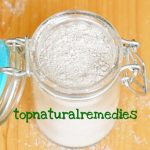Nourish Your Heart and Soul with Tulsi – (Not) Just Another Sacred Herb
In or near almost every Hindu house there is a shrine or at least a special place where a Tulsi plant is grown with care and reverence. Vaishnavas consider it as “the manifestation of god in the vegetable kingdom” and sometimes a house with a Tulsi plant is considered a place of pilgrimage. A person who waters and cares for the Tulsi daily is believed to gain moksha (salvation) and the divine grace of Vishnu, even if he/she is not actually a worshiper of Vishnu. Tulsi was traditionally used as an adaptogen, for the prevention and treatment of heart diseases, for colds, arthritis and many other health problems. Modern research seem to confirm its use for the treatment of diabetes, peptic ulcer, anxiety, stress and many other health problems.

Tulsi in Sanskrit means “the Incomparable One” and she has been deemed the Queen of Herbs. Tulsi plays an essential role in the Indian lunar calendar. Kartik (a month that covers approximately the second half of October and the first half of November) is loved by Tulsi . During this time the holy plants are decorated with sugar cane, mango leaves and flowers. The Tulsi goddess is formally married to Lord Vishnu annually any time between the eleventh day of the bright fortnight (the first half, during which the moon is waxing) of Kartik and the fool moon of the month; this signifies the end of the monsoon and inaugurates the marriage season in India.
Tulsi, also known as holy basil, is an aromatic plant native to the Indian Subcontinent, 30–60 cm tall, with hairy stems and green or purple leaves that are strongly scented which can be used either as an infusion or an extract or for distilling an essential oil. The primary constituents of the essential oil are, in concentrations that vary according to different environmental factors: eugenol (up to 62%), methyleugenol (up to 86%), and α- and β-caryophyllene (up to 42%).
Contents
Uses described in folk medicine
– heart disease
– earache, sinusitis
– stomachache, vomiting, intestinal worms
– epilepsy, malaria, snakebites
Uses described in pharmacopoeias and in traditional systems of medicine
– asthma, bronchitis
– fever, common cold, influenza
– arthritis, rheumatism
– diabetes
– peptic ulcer
Uses supported by clinical data
– diabetes
– heart disease
– peptic ulcer
– fever
– pain
– convulsions
– anxiety
– stress



